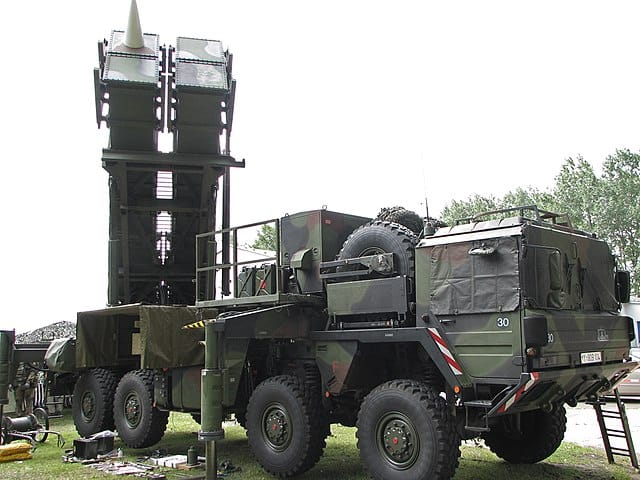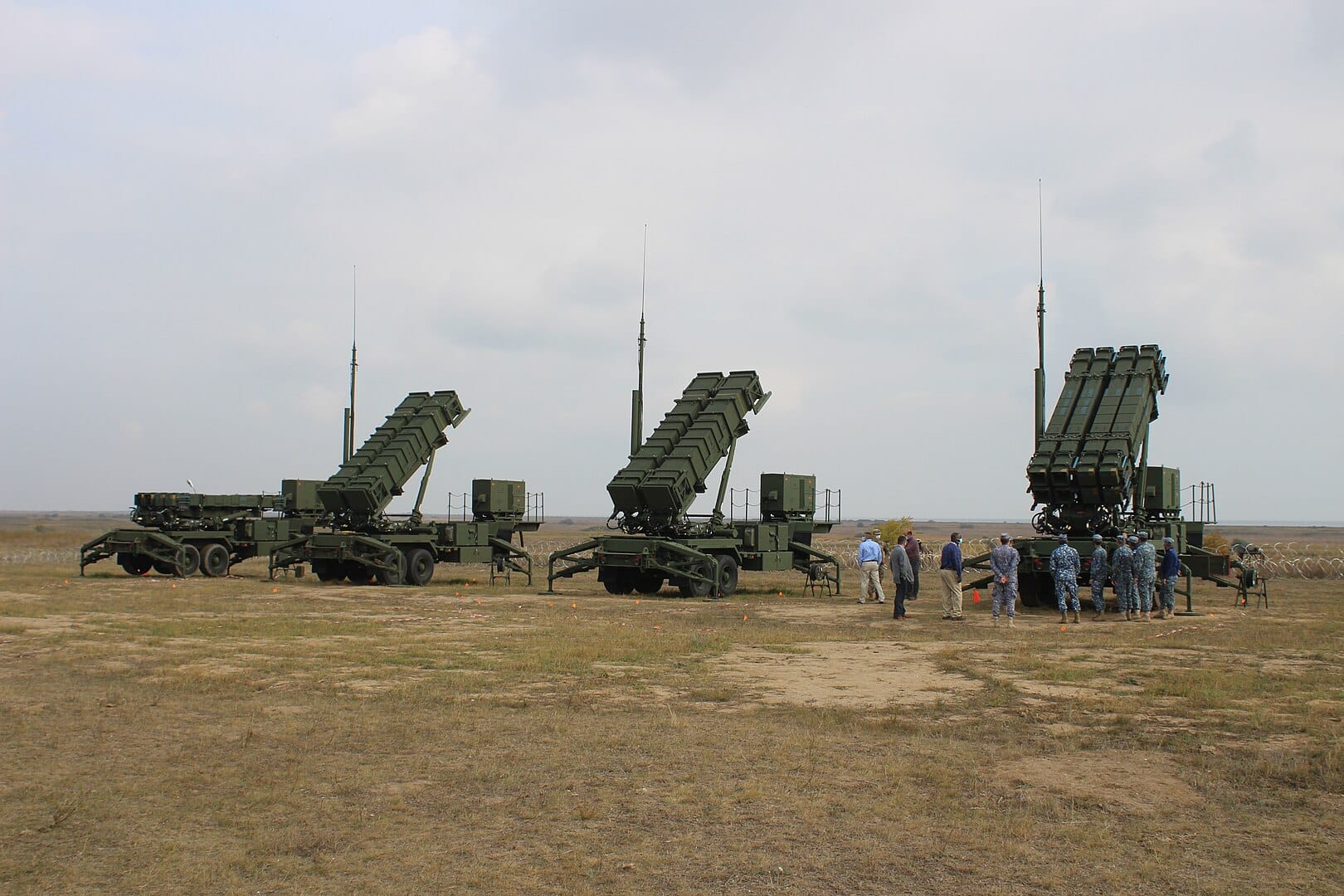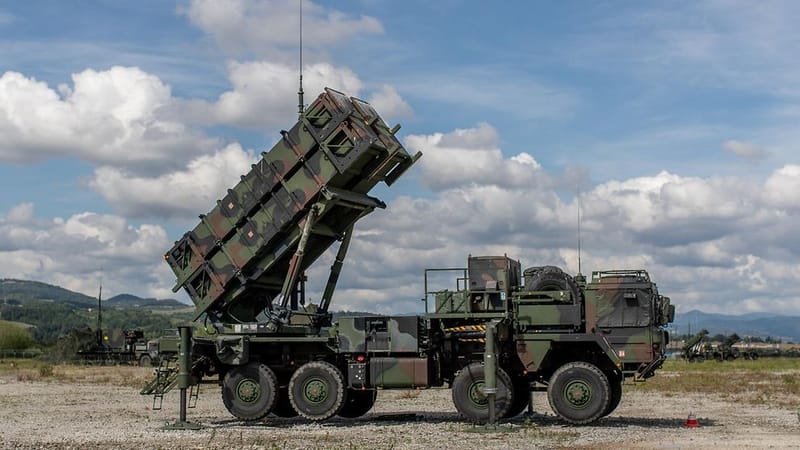Strengthening EU Air Defense with NATINAMDS and ESSI Sky Shield
With air and missile threats increasing, Europe complements NATO's NATINAMDS with the European Sky Shield Initiative (ESSI) to create an integrated and layered security net.

NATINAMDS and ESSI in Focus
In response to increasing aerial threats, European NATO member states are expanding their air defense systems through both the NATO Integrated Air and Missile Defense System (NATINAMDS) and the European Sky Shield Initiative (ESSI). These complementary frameworks combine NATO’s multinational capabilities with a Europe-centric approach, ensuring a robust, layered defense against threats ranging from aircraft to ballistic missiles. As drones, cruise missiles, and hypersonic weapons reshape the security landscape, both NATINAMDS and ESSI play pivotal roles in bolstering European air defenses and protecting European airspace.
NATINAMDS serves as the central framework for NATO’s air and missile defense strategy, utilizing a network of sensors, radars, interceptors, and fighter jets under a unified command structure. ESSI, launched in 2022, supports these efforts by enhancing Europe’s own air defense systems through joint procurement and the deployment of advanced European-made systems like the IRIS-T SLM. Together, NATINAMDS and ESSI create a cohesive defense shield that provides layered protection and enhances European defense autonomy while maintaining close coordination with NATO.
NATINAMDS: The Backbone of NATO’s Air and Missile Defense
Overview of NATINAMDS’ Capabilities and Structure
NATINAMDS, the NATO Integrated Air and Missile Defense System, unites air defense capabilities across NATO member states. Led by NATO’s Supreme Allied Commander Europe (SACEUR), NATINAMDS brings together multinational assets, including radars, missile defense systems, and fighter jets, to create a seamless defense network. This architecture enables rapid, coordinated responses to incoming threats, optimizing NATO’s ability to detect, track, and neutralize missiles or hostile aircraft.
Key components of NATINAMDS include:
- Multinational Radar and Sensor Network: Enables early detection and tracking of incoming threats across vast regions.
- Ground-Based and Airborne Defense Systems: Interceptors like the Patriot system and fighter jets equipped with air-to-air missiles create multiple layers of defense.
- Unified Command Structure: The SACEUR’s centralized command facilitates swift decision-making and streamlined operations across member states.
Through real-time data sharing and multinational coordination, NATINAMDS consolidates member resources into a powerful defense framework, allowing NATO to intervene rapidly and effectively when any allied nation faces an aerial threat.
Adapting to Modern Threats
The NATINAMDS network must constantly adapt to evolving technologies, such as hypersonic weapons and unmanned aerial systems (UAS), which present unprecedented challenges. Hypersonic missiles, capable of reaching speeds above Mach 5, limit response time, making traditional intercept solutions less effective. NATINAMDS’ adaptability lies in its ability to integrate new technologies, including advanced radars and sensors that extend detection range and improve response accuracy.
As NATINAMDS continues to evolve, NATO can respond more efficiently to high-speed threats by combining new sensor technology, automated detection capabilities, and advanced data-sharing protocols. This dynamic approach ensures that the alliance remains resilient against emerging threats.
ESSI: Enhancing Europe’s Regional Air Defense Capabilities
Role and Objectives of the European Sky Shield Initiative
The European Sky Shield Initiative (ESSI) was established to bolster Europe’s air defense capabilities and ensure that the continent can respond rapidly to regional threats. ESSI’s core mission is to enhance Europe’s defense posture by modernizing and integrating European air defense systems, filling gaps that NATINAMDS may not address as efficiently at the regional level. Unlike NATINAMDS, which encompasses NATO’s entire transatlantic network, ESSI focuses on enhancing Europe’s internal defense through collaborative procurement and localized infrastructure.
Key Components of ESSI and Collaborative Procurement
A critical component of ESSI is the collective acquisition of defense systems that serve Europe’s unique needs, including medium-range missile defense systems like Germany’s IRIS-T SLM. Designed for high mobility and integration with existing NATO assets, the IRIS-T SLM targets low-flying missiles and drones, addressing Europe’s short- to medium-range defense requirements. This initiative underscores Europe’s goal of achieving “strategic sovereignty” in defense by reducing reliance on external suppliers and establishing a unified European defense infrastructure.
In addition to procurement, ESSI strengthens regional defense through joint training exercises, shared technological standards, and collaborative deployment strategies. This framework not only reinforces NATO’s air defense network but also enhances Europe’s self-reliance and capacity to address security challenges independently.
Complementing NATO with a Multi-Layered Defense Approach
Coordinated Ground-Based and Airborne Defense Layers
Both NATINAMDS and ESSI integrate ground-based and airborne defense systems to create a comprehensive, multi-layered shield against aerial threats. Ground-based systems like the Patriot missile defense, capable of intercepting cruise and ballistic missiles, form the backbone of Europe’s stationary air defense infrastructure. In contrast, airborne assets—such as Eurofighter jets armed with Meteor air-to-air missiles—offer rapid-response interception capabilities. Together, these systems enhance Europe’s ability to detect, intercept, and neutralize threats before they reach populated or strategically sensitive areas.
By coordinating these assets, NATO and ESSI create a layered defense that maximizes flexibility and operational depth. This strategic integration allows each system to compensate for potential gaps in the other, optimizing response capabilities and reducing vulnerabilities.
NATINAMDS and ESSI: Complementary, Not Competitive
While NATINAMDS provides a broad, multinational defense infrastructure, ESSI strengthens Europe’s ability to manage localized security needs. ESSI complements NATO by reinforcing European autonomy, adding a European-centered pillar that can act independently when needed while remaining interoperable with NATINAMDS. This dual structure mitigates the risk of duplication and enhances Europe’s ability to counter threats rapidly within its own airspace.
As Europe builds its own defense resources, NATINAMDS and ESSI demonstrate that NATO and the EU can pursue coordinated defense efforts that bolster collective security without compromising European sovereignty.
Challenges and Future of NATO-Europe Air Defense Cooperation
Addressing Interoperability and Technological Advancements
For NATINAMDS and ESSI to function effectively as a combined defense system, interoperability remains critical. Ensuring that member states’ defense assets—from radar systems to interceptors—can operate seamlessly is essential for creating a cohesive, reliable network. Joint NATO and EU training exercises and standardized technological frameworks support this goal by facilitating real-time data sharing and unified responses to threats.
However, the rapid pace of technological advancements in missile and drone capabilities poses a continuous challenge. Both NATINAMDS and ESSI must undergo regular upgrades to stay ahead of these developments. Budget constraints, differing national defense priorities, and the complexity of managing multinational systems add further challenges, underscoring the importance of maintaining an agile, adaptive approach to defense.
Strengthening European Autonomy Through Strategic Procurement
ESSI represents a step toward Europe’s goal of “strategic sovereignty” in defense. By focusing on European-led procurement and infrastructure, ESSI reduces dependency on external suppliers and strengthens Europe’s defense industry. This approach not only fosters innovation but also enhances Europe’s resilience by reducing potential supply-chain vulnerabilities.
The strategic independence ESSI offers aligns with broader EU goals to achieve greater defense autonomy, providing Europe with the means to protect itself while remaining a key player in NATO’s collective security framework. This balance allows Europe to address unique regional challenges without compromising its commitment to transatlantic defense.
Conclusion: A Unified Defense Against Evolving Threats
Together, NATINAMDS and the European Sky Shield Initiative represent a comprehensive approach to European and NATO air defense. NATINAMDS provides the centralized, multinational backbone essential to NATO’s defense strategy, while ESSI bolsters Europe’s ability to respond to threats independently and enhance its self-sufficiency. This complementary relationship underscores the resilience of NATO’s alliance and Europe’s commitment to building a secure, autonomous defense infrastructure.
In an era marked by hypersonic missiles, drones, and advanced air threats, Europe and NATO are adapting their defense frameworks to ensure robust, layered protection. Through collaborative procurement, interoperable systems, and continuous innovation, NATINAMDS and ESSI are well-positioned to secure European airspace and address emerging challenges in an increasingly complex security landscape.
Read more about the latest Q4 developments on EU Air Defense and the Skyshield here on Grosswald.org:





